| HOME |
|---|
ARIES
The Ram
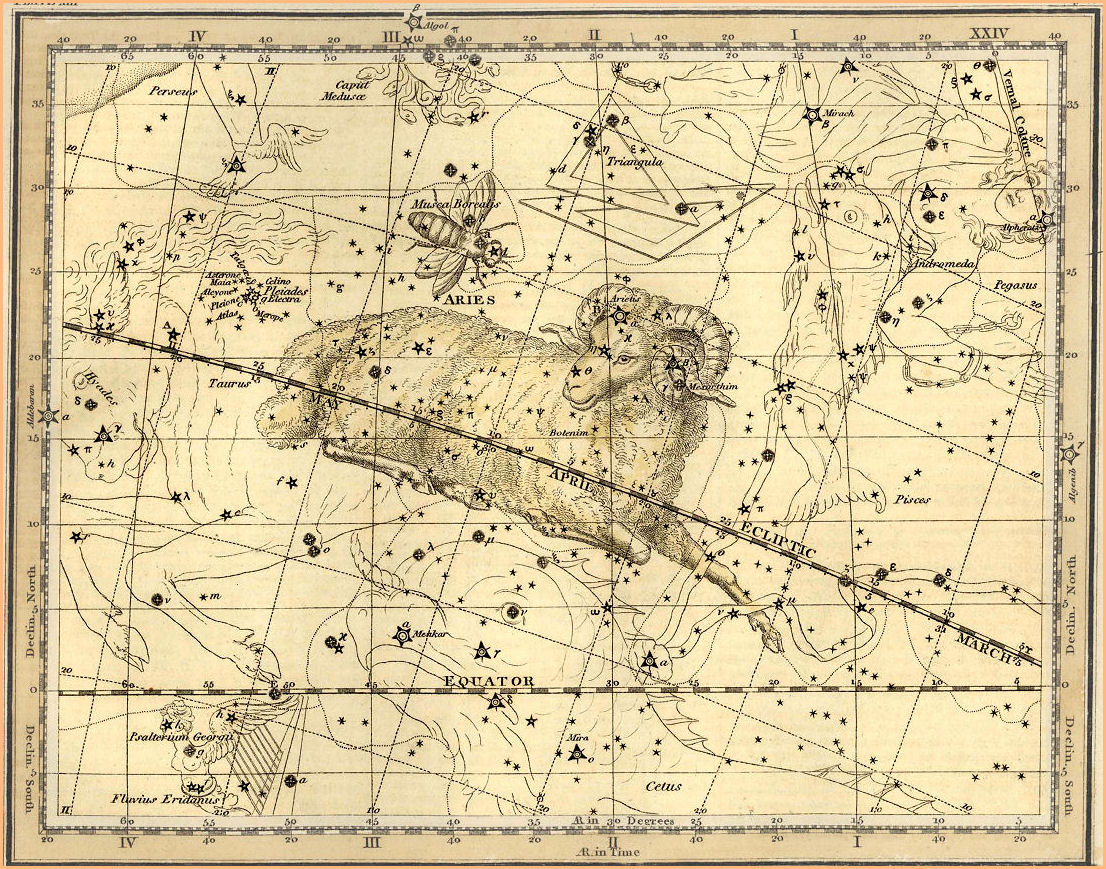
Aries - Celestial Atlas by Alexander Jamieson - 1822
| HOME |
|---|

Aries is one of the oldest constellations and has symbolized a ram throughout history. The ram held an important position in the cultures of almost all ancient peoples. Easily domesticated and utilized for both its meat and its wool, the ram was also highly regarded for its religious significance. It was the favoured animal to appease the gods on the sacrificial altar, and many ancient dieties were depicted with the head of a ram.
To the Greeks, Aries was the winged ram with the golden fleece, who rescued Phrixus and Helle, the son and daughter of King Athamas of Boeotia, who were about to be killed by their jealous stepmother. The children climbed on the ram's back, and were carried off to a far away land on the shores of the Black Sea. On the way, the little girl, Helle, lost her grip and fell into the sea, and the Greeks named the place she fell the Hellespont in her memory (also known as the Dardanelles). The boy made it to safety, and the ram was sacrificed to Zeus, its beautiful golden fleece kept by King Aeėtes of Colchis.
Meanwhile, back in Greece, Pelias, cousin of the boy, Phrixus, had stolen the throne from the rightful successor, his nephew Jason. When challenged by Jason, Pelias decreed that if Jason could find the golden fleece of the ram that saved Phrixus, and bring it back to Greece, he would give up the throne to him. So began the epic quest of Jason and the Argonauts. After a long journey as famous and full of adventure as Homer's Odyssey, Jason and the Argonauts finally succeed in stealing the fleece from King Aeėtes, and bringing it back to Greece.
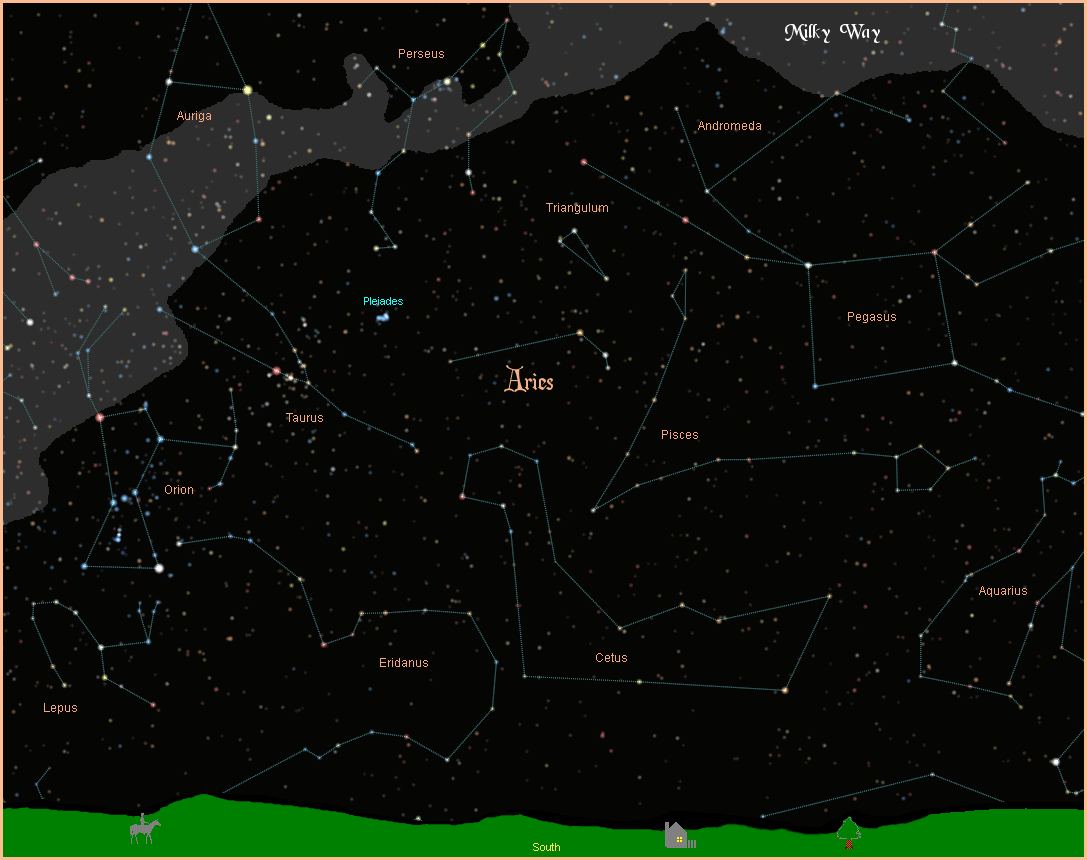
The alpha star in the constellation is Hamal, Arabic for sheep. It is a K2III orange giant, about 65 light years away, with a magnitude of 2.0. In 2010, Hamal was discovered to have a planet in orbit around it 1.8 times the size of Jupiter.
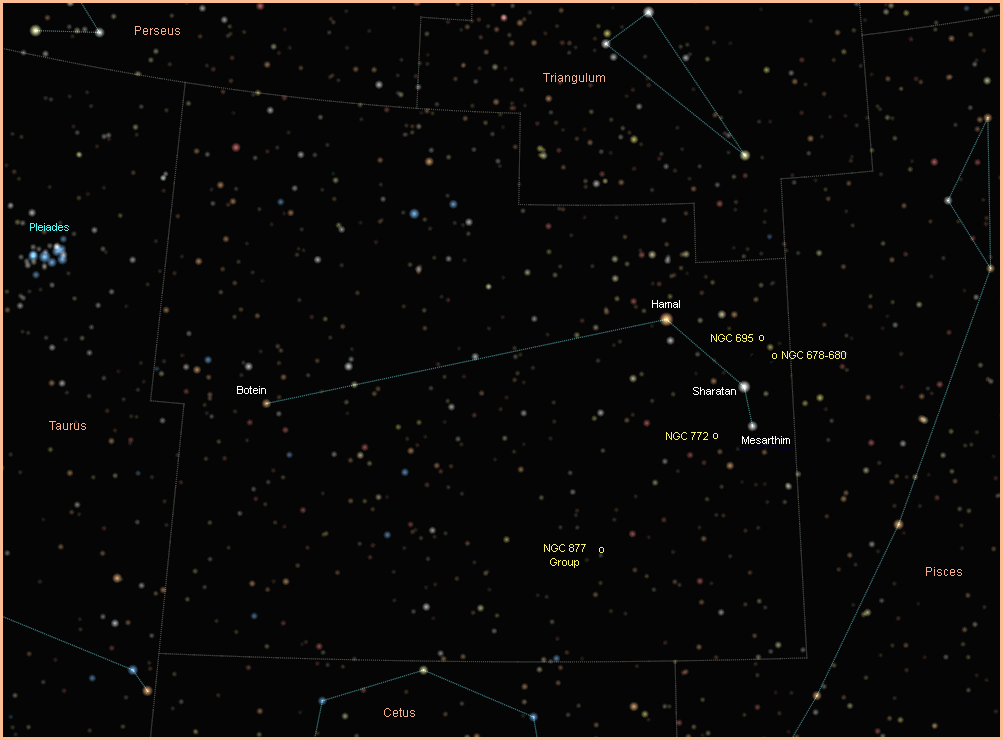
Beta Arietis is known as Sharatan, a name it once shared with Gamma Arietis, the Arabic for two signs, as these two stars not only marked the head (or horn) of the ram, in ancient times they also used to mark the point of the vernal equinox. Beta Arietis is a spectroscopic binary, two stars in very close orbit, about 60 light years away. The primary star is an A5V white main sequence star, with a magnitude of 2.65.
Gamma Arietis was eventually assigned its own name, Mesarthim, whose origins are unclear. It was once referred to as the first star of Aries, as it was closest to the precise point of equinox. Like Beta Arietis, Gamma Arietis is a binary system, composed of two stars. Far enough apart to be optically separated, the two stars are very similar, both generally classified as A2V white main sequence stars, with a combined magnitude of 3.96. The system is about 160 light years away.
Delta Arietis is named Botein, from the Arabic for belly. It is a G9III yellow giant, with a magnitude of 4.35, about 170 light years away.
Aries contains seven stars known to support planetary systems, including the bright luminary of the constellation, Hamal, as mentioned above. It has a planet 1.8 times the mass of Jupiter in a 381 day orbit, 1.2 AU (112 million miles) from the star. Another star, designated HIP 14810, has three planets in orbit around it. It is a G5V yellow main sequence star, similar to our Sun, 174 light years away with a magnitude of 8.5. Although all three planets are gas giants, at least one is within the star's habitable zone where liquid water is possible, so there could easily be some life friendly moons. For more information on these and other extrasolar planets, visit NASA's New Worlds Atlas, and The Open Exoplanets Catalogue.
There are several galaxies in Aries, but they are all far away and dim, a challenge for small scopes. With the larger telescopes and some creative time exposures, they can be quite spectacular. NGC 772 is estimated to be 200,000 light years across, twice the size of the Milky Way galaxy. It is about 130 million light years away with a magnitude of 10.3.
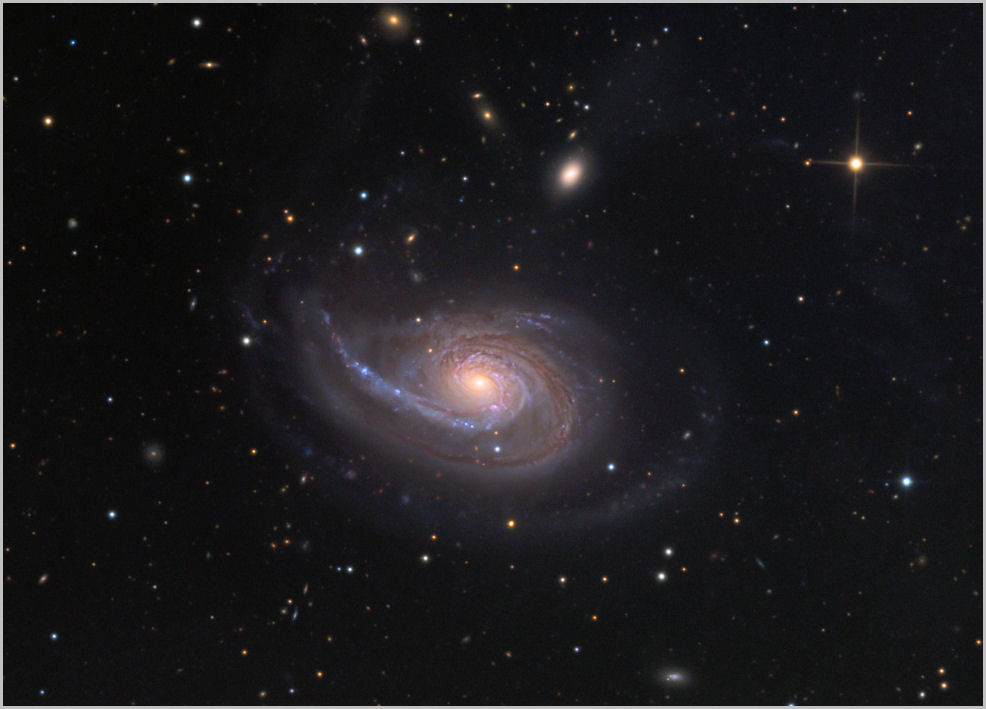
At a distance of about 115 million light years, 12th magnitude spiral galaxy NGC 678 and 12th magnitude elliptical galaxy NGC 680 appear to be interacting, and can both be seen in the same field of view.
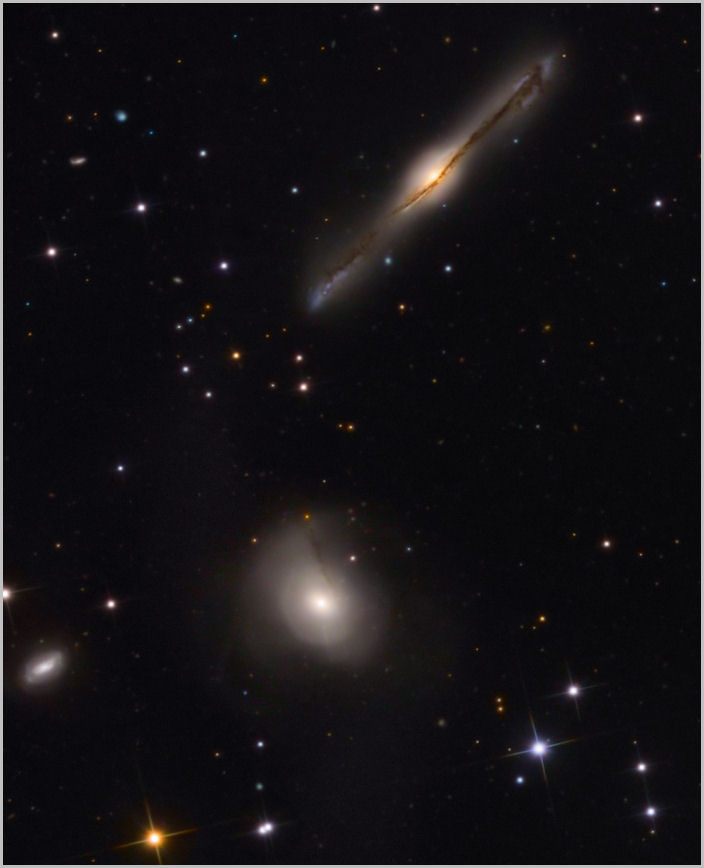
Very far away at a distance of 400 million light years, is the distinctive spiral galaxy NGC 695.
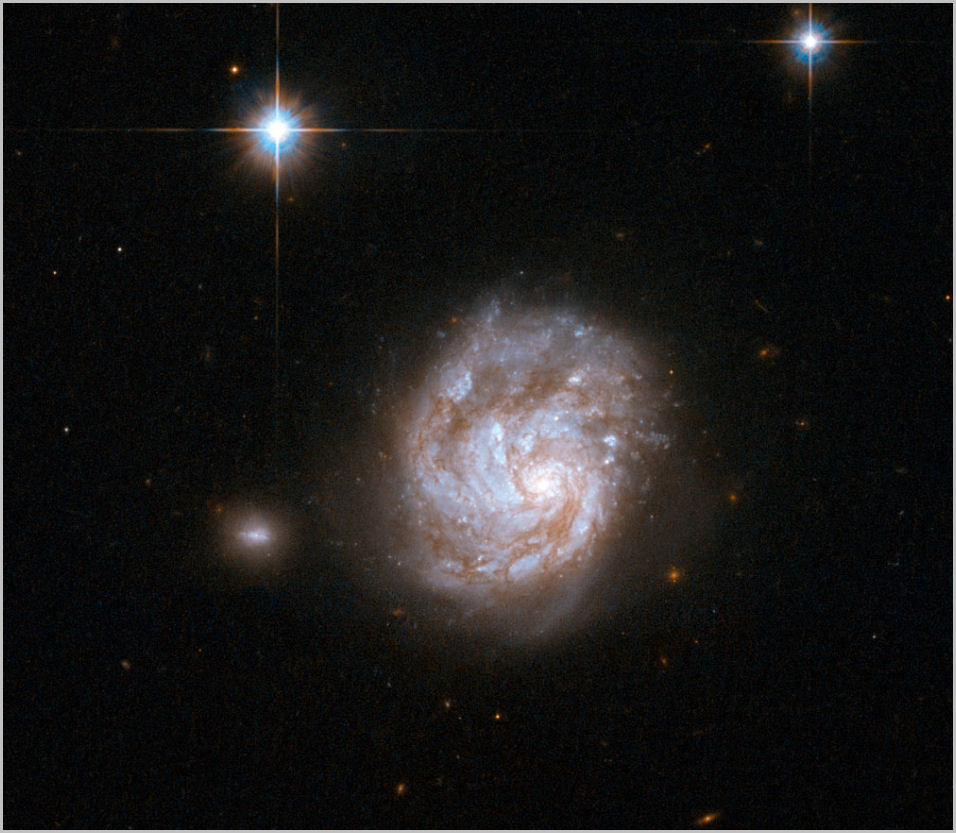
A pleasing little group of nine galaxies, of which NGC 877 is the largest and brightest, and located about 150 million light years away. The other eight galaxies in the field of view are NGC 870, NGC 871, NGC 876, UGC01761, PGC1462476, PGC090603, PGC1458479 and PGC212949.
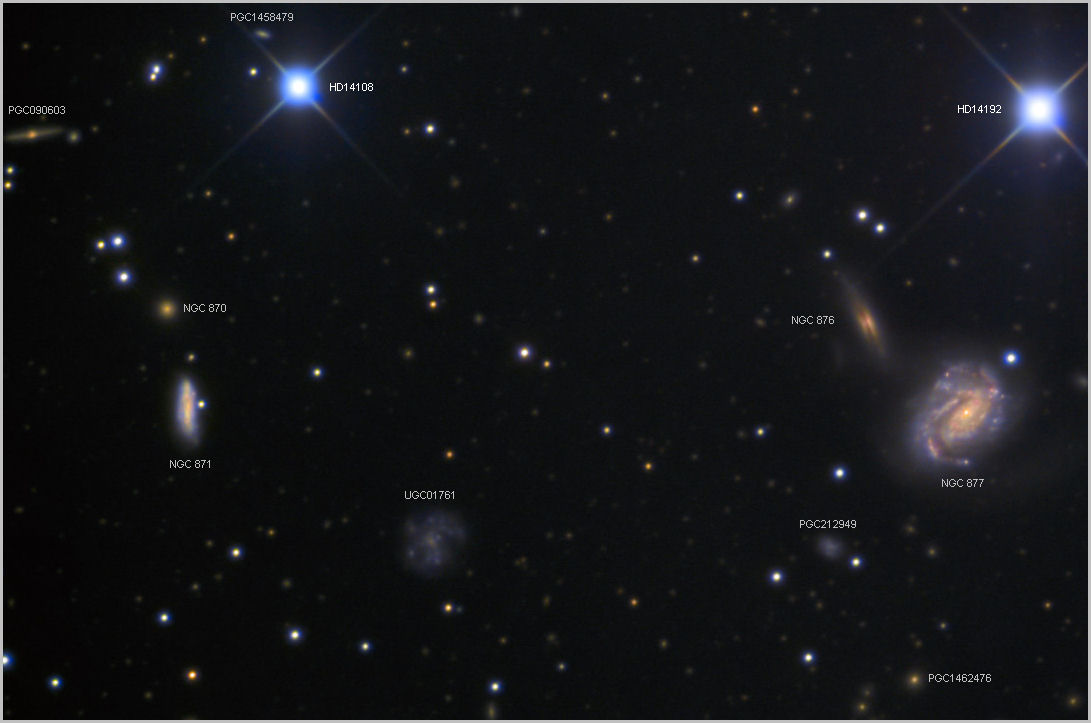
Aries is one of the thirteen constellations that encompass the ecliptic, the apparent path of the Sun, Moon and planets across the sky, and it is one of the twelve traditional ecliptic constellations that comprise the astrological zodiac. Two thousand years ago, on the first day of spring (in the northern hemisphere), more properly known as the moment of the vernal equinox, the Sun was in the constellation Aries. This was called the First Point In Aries. However, due to the precession of Earth's axis, right around the birth of Christ the Sun began to enter the constellation Pisces on the first day of Spring, and 700 years from now, it will be in Aquarius.
|
|
|
|
|
|